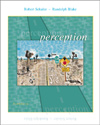In this chapter, we noted how ideas about color vision have developed over the past 300 years. We described the mechanisms of color vision, emphasizing that wavelength of light is first analyzed by three spectrally broad and widely overlapping cone photopigments and that the outcome of that analysis is then fed into chromatic and achromatic visual channels. Unfortunately, science's success in explaining how people see color tends to obscure why they see color. Probably, the ability to perceive color developed to help creatures detect and discriminate objects in their environment. Because objects - artificial as well as natural - have characteristic pigments, they absorb and reflect light in characteristic ways. These patterns of spectral reflection make it advantageous to have color vision. An animal whose visual system retains information about the wavelength distribution of reflected light can more easily pick out objects from their backgrounds. Moreover, the colors of the surfaces of objects enable the animal to recognize what sort of objects it has encountered and what kinds of actions those objects call for. In the next chapter, we introduce the three-dimensional quality to vision, a quality that defines the presence, location, and shapes of objects. |



 2002 McGraw-Hill Higher Education
2002 McGraw-Hill Higher Education

 2002 McGraw-Hill Higher Education
2002 McGraw-Hill Higher Education